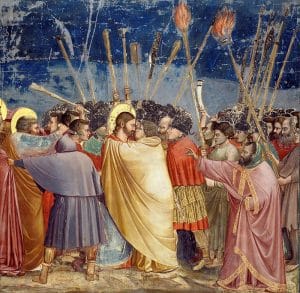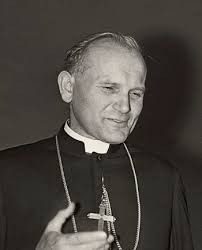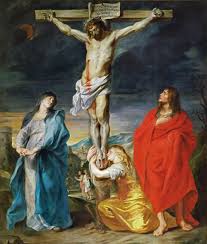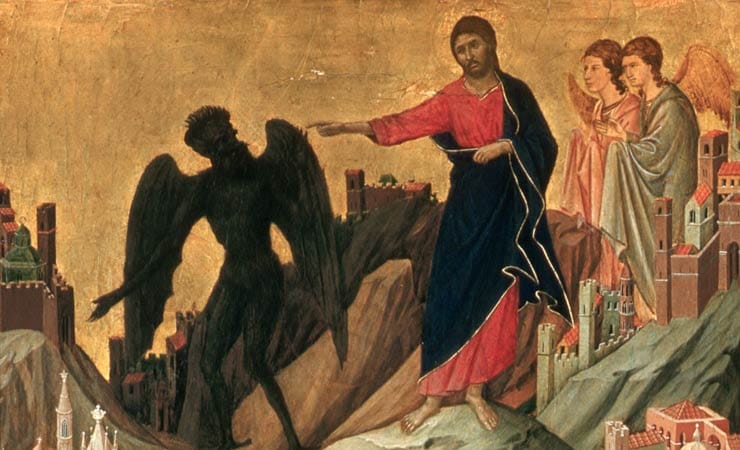As Moses departed from the people of Israel, he promised that God would send another prophet just like him (Dt 18:15). This prophet would not only lead them into the True Promised Land, but would give them a new law. So the Jews were constantly on the lookout for this “new Moses” and the early Church repeatedly preached Jesus as the Mosaic prophet they were looking for (c.f. Acts 3:22, 7:37). It is no surprise then that Our Lord, just after beginning His public ministry in Matthew’s gospel (addressed to the Jews), climbs a mountain and delivers the Sermon on the Mount. For just like Moses who had to climb Mount Sinai to bring the law from God down to the people, the new Moses, God Himself, speaks directly from the mountain about the Law.
Chronologically and culturally removed from the Sermon on the Mount, it is often confusing for us when the Bible speaks of “the Law”. What exactly does that mean and, more specifically, what does it mean when Our Lord tells those gathered that “Do not think that I have come to abolish the law or the prophets. I have come not to abolish but to fulfill” (Mt 5:17)?
The Old Law
In his treatise on Law in the Summa Theologiae, St. Thomas Aquinas enumerates three kinds of precepts of the Old Law: moral, ceremonial, and judicial. By placing all of the Old Law within these three broad categories, we are able to better understand both our relationship to the law and the manner in which Christ can say that He did not abolish it but came to fulfill.
When most people think of the “Old Law” the Ten Commandments immediately come to mind. It serves as the foundation for all the moral precepts contained within the Old Law. The Decalogue is in a certain sense superimposed upon the Natural Law, making the precepts of the Natural Law specific. Some of the precepts are easily discernible based on the natural law—“thou shall not kill…thou shall not bear false witness”. Other precepts require wisdom and reflection such as “thou shall not covet thy neighbor’s wife.” Still others, especially those of the first tablet require Divine instruction. Nevertheless, they do all relate to what can be known from the natural law.

Second, there are the ceremonial precepts of the Old Law. These pertain to Divine Worship. This would include things like sacrifices, sacred things such as the tabernacle, Old Testament “sacraments” such as Seder Meals and circumcision, and observances that distinguished them as worshippers of the True God (not eating pork, etc.).
Finally, there is judicial law. Judicial law is similar to civil law in that it determines the way that a People is governed. It maintains the sovereignty of the People, it governs relations within the People, and governs how citizens interact with non-citizens. Much of the book of Leviticus lays out in detail how Israel is to govern itself in these areas. Israel was to be a “light to the Gentiles” but must remain a distinct People because “salvation comes from the Jews.”
Fulfillment of the Law
With three types or precepts of the Old Law, there are also three ways in which Christ fulfilled them. When we speak of “fulfillment” we must first grasp intention. The moral precepts, reflected in the Ten Commandments, are the direct intention of God with respect to how we are to relate to Him (1st-3rd Commandment) and to each other (4th-10th Commandment). As St. Thomas says, there can only be dispensation of the law when the letter of the law frustrates the intention of the Lawgiver. Therefore, there is no abrogation of the moral precepts of the Old Law.
Christ, nevertheless, fulfills the moral precepts in Himself. He perfectly follows the moral law. In so doing, He wins graces for His followers such that they are empowered to do the same thing. It is as if He gives us the power to “re-read” the Decalogue not in terms of rules but as a prophecy. “in Christ you shall not make false idols…in Christ you shall not covet your neighbor’s goods” etc.
Christ likewise fulfilled all the ceremonial precepts. The purpose of the ceremonial precepts was to prefigure and act as a foreshadowing of the mystery of Christ. All of the sacrifices find their meaning and fulfillment in His sacrifice on the Cross. He is the true tabernacle. Baptism becomes the “new” circumcision. All dietary laws are abrogated because the Bread of Life has become man’s true food.
The judicial precepts had as their purpose setting apart the Jews for the sake of the Messiah. In Christ there is no distinction between Gentile and Jew so that the judicial precepts are no longer binding (Heb 7:12). The catholicity of the New Israel means that the theodicy of the Old Israel has ended and the principles of the New Covenant can guide men in civil life, regardless of the form of government they take. Church and State work together, each within its respective sphere, to bring men to salvation, rendering unto Caesar what is Caesar’s and God what is God’s” (Mk 12:17).
We see then how Christ came not to abolish but to fulfill the Law. He fulfills the moral, ceremonial, and judicial precepts of the Law, but each in a unique way. The moral by empowering men to live according to God’s law. The ceremonial by giving us Himself on the Cross and through the Sacraments. And the judicial precepts through the Church.

















